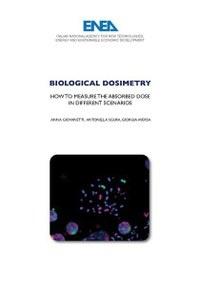Agenzia nazionale per le nuove tecnologie, l'energia e lo sviluppo economico sostenibile
PUBBLICAZIONI - Sito tematico ENEA
Biological dosimetry

How to measure the absorbed dose in different scenarios
Kind of publication : VOLUME
Authors: Anna Giovanetti, Antonella Sgura, Giorgia Aversa
Publisher: ENEA
pp. 34, 2012
ISBN: 978-88-8286-264-0
Price: free
ABSTRACT
We are all exposed to radiations due to natural background, in addition a growing number of people receives radiation for medical purposes, other persons are exposed for professional reasons and recently it has been raised concern on the possibility for the population to be exposed to radiation due to a nuclear incident or a terrorist attack. The radiation protection Agencies have established specific criteria and procedures for decreasing radiation exposure and for minimizing unwanted effects in all these different scenarios. Prerequisite for planning any intervention is the knowledge of the absorbed dose. In any situation where there is exposure to radiation, the only way to reconstruct the individuals’ absorbed dose is by measuring variations in some biological parameters: biodosimetry. Workplaces and exposed workers are equipped with physical dosimeters, however no information is available on the health effects, on previous exposures or on individual radiosensitivity, thus biological dosimetry is needed when physical dosimetry can not be used or does not provide sufficient information.
This report is an extended version of the Handbook utilized for the Practical course on biological dosimetry, held in the frame of the International congress From dosimetry to biological effect: radiobiology as guide to clinical practice in nuclear medicine (Sorrento, Italy, November 5-8, 2011). There will be briefly introduced the main exposure scenarios and the most utilized biodosimetry methods.
Disponibile in formato elettronico:
Dimensione: 3.73 MB
